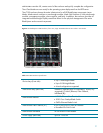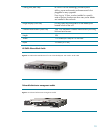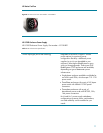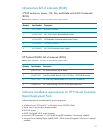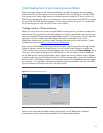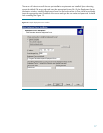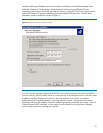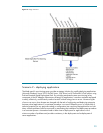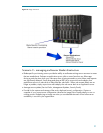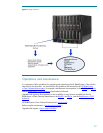Usage scenarios for the blade provisioning server
The three basic IT scenarios hosted on this server blade are:
1. Mass deployment of HP ProLiant BL c-Class servers within an organization that is looking for
automation in order to reduce errors and reduce the amount of time to deploy servers.
2. Deploying applications using advanced imaging and scripting technology/methodology.
3. Managing a multi-server blade infrastructure can be a challenging task without the right
provisioning tool. The blade-specific provisioning server not only automates the deployment of
application servers, but also provides the ability to manage multi-server environments that allow
you to deploy and redeploy IT resources where they are most needed quickly and easily to adapt
to changing business needs.
The following outlines the functional requirements that typify the usage of this server blade. This
includes a technical description of the three (3) scenarios with topology diagram and minimum
requirements for hardware, software, installation and configuration.
Scenario 1 – mass deployment of c-Class server blades
Before beginning with scenario 1, it is helpful to reiterate some assumptions made earlier. This
provisioning server will act as the DHCP Server, the PXE Server, and HP RDP Provisioning Server.
Many organizations may already have an existing DHCP Server in place. If a DHCP Server already
exists within your infrastructure, just be sure to point to that DHCP Server during the time of HP Altiris
RDP software installation. For the purposes of this document, assume that this provisioning server is the
only DHCP Server in the company.
Unattended and automated large scale deployment of c-Class blade servers will benefit from the
blade-specific provisioning server by significantly reducing the time to bring the servers online. In
addition, the automation allows for very little, if any, human intervention, which reduces any chances
of error that may occur during the deployment process.
19



